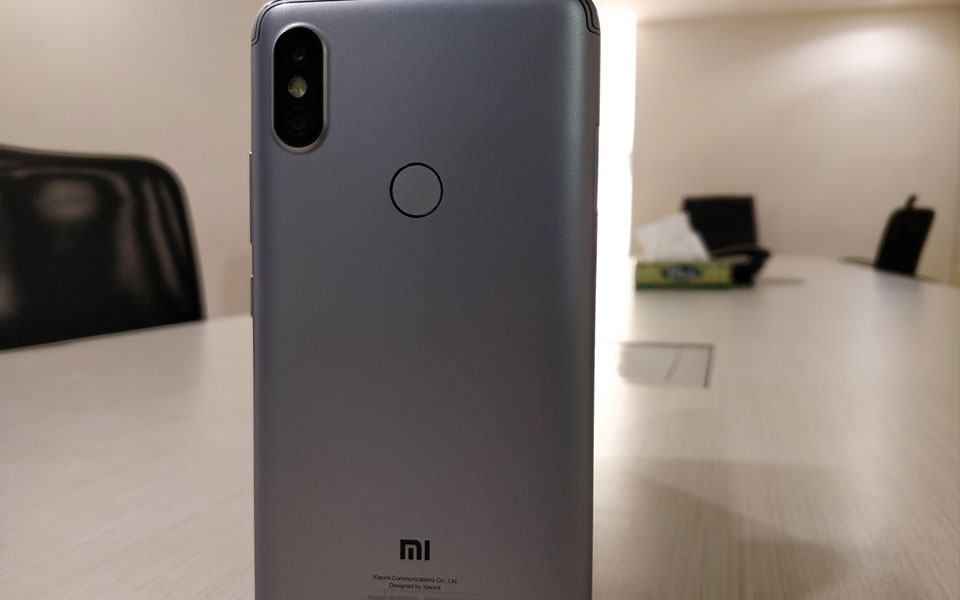New Delhi, July 9 : Among the Chinese players that have carved out a niche for themselves in the smartphone market in India, Xiaomi is among the top. What has worked in its favour so far is its focus on providing Indian users with reliable devices at relatively lower cost.
The launch of Redmi Y2, successor to the Redmi Y1, at Rs 9,999, is very much in line with this strategy.
In fact, the Redmi Y2 has two variants. The 4GB Ram and 64GB internal storage variant is priced slightly higher, at Rs 12,999, compared to the 3GB RAM + 32GB onboard storage variant which is priced at Rs 9,999 (that we reviewed).
With a 16MP front shooter, dual rear camera and fingerprint and face unlock features, the Redmi Y2 targets the young and the stylish and its USP is the Artificial Intelligence (AI)-powered camera technology that promises to automate the beautification process in images based on the user's age and gender.
But how good is it in delivering on the promises that the specifications of the phone make? Let's have a look.

In terms of look and feel, there could always be scope for improvement and this could well be said of phones of most of the brands. But there is actually not much reason to dislike the design of the Redmi Y2.
It is a big phone, but it fits well in the hands and hardly poses any hurdle in navigation, made easier by the MIUI "intuitive" gesture controls.
This feature is useful for single-hand navigation as it enables you to go back to a previous menu with a swipe of your finger -- up, left, or right. You can easily do away with the need of pressing the "back" or "home" buttons.
While the tiny bezels make it even more appealing, the 5.99-inch "Full Screen" display featuring an 18:9 aspect ratio is designed to make media streaming on the device a delightful experience.
The camera technology is definitely a plus for the device, especially when it comes to low-light photography. And this is not only true for the front-shooter.

The 12MP+5MP dual camera system at the back clicks fairly good quality pictures, even in semi-dark conditions.
In terms of performance too, the phone strikes the right chords. Powered by the Octa-core Snapdragon 625 processor, the device houses a 3,080 mAh battery which is good enough to run a whole day on a single charge if the usage level is moderate.
The SIM tray has dual-SIM card slots and supports a Micro-SD card. Storage capacity of both the variants is expandable up to 128GB.
In comparison, the Honor 7C, which is similarly priced, features 13MP+2MP primary dual camera and 8MP front facing camera. In terms of looks and features and with its powerful front-shooter edge, the Redmi Y2 can also give the Honor 7X which comes with 4GB RAM a tough competition as the later is priced on a slightly higher side.
But in terms of visual appeal, the Honor 7X, with its compact metal unibody design, does stand out.
What does not work?
While its AI-powered selfie shooter intends to enhance the picture, it still has scope for improvement. To make the face unlock feature work, you sometimes need to adjust the angle of your screen, or your face.
Moreover, heavy users -- those who are into gaming and extensive media streaming -- may find the battery life per charge less than adequate.
Conclusion: Bracketing the Redmi Y2 as a selfie phone will be wrong. It is much more than that. Besides the camera technology, which is the highlight of the phone, it scored highly in terms of design, performance and ease of use too, making it a desirable phone in the sub-Rs 10,000 segment.
Let the Truth be known. If you read VB and like VB, please be a VB Supporter and Help us deliver the Truth to one and all.
New Delhi (PTI): The Budget session of Parliament is likely to commence on January 28 and the Union Budget is set to be tabled on February 1, a Sunday.
Officials, citing the tentative schedule finalised by the Cabinet Committee on Parliamentary Affairs, said on Friday that President Droupadi Murmu will address a joint sitting of the two Houses on January 28.
The customary address of the President takes place on the first day of the first Parliament session of the year.
The two Houses will not meet on January 29 due to the Beating Retreat ceremony.
Parliament will sit on January 30 when the Economic Survey is likely to be tabled.
On January 31, the Lok Sabha and the Rajya Sabha will not meet.
The Union Budget is set to be tabled on February 1, a Sunday.
After discussions on the Motion of Thanks on the President's address and Union Budget, Parliament will adjourn for a near month-long recess on February 13.
Parliament will reconvene on March 9 and the session will conclude on April 2, a Thursday.
Usually Parliament is adjourned on a Friday but keeping in mind Good Friday on April 3 and the subsequent weekend, the session could conclude on April 2, officials said.
The recess in the Budget session helps department-related standing committees to examine demands for grants of various Union ministries and departments.





